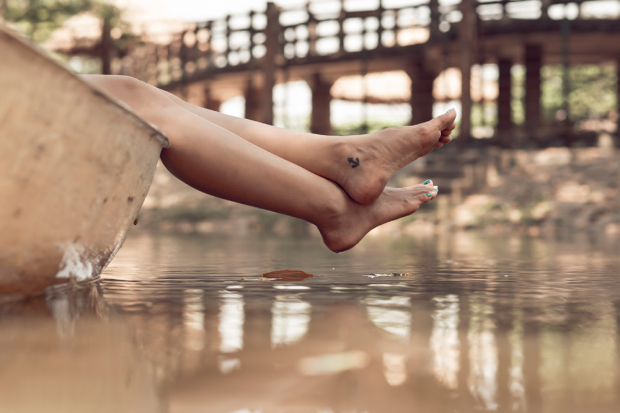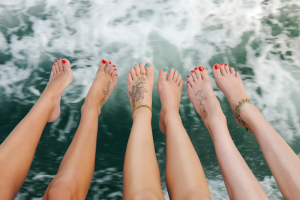Ink About It Spring Is Definitely The Best Season To Get A Foot Tattoo
Tattoo experts agree spring is the best season to get a foot tattoo, as the aftercare steps are much easier for the feet in the spring season.
Sandal season brings more than just pedicures and nail painting. The pre-summer months also mean longer lines at the local tattoo parlor, and for a dang good reason: Experts agree that spring is the best time of year to get foot tattoos.
Why Wait For Spring To Get A Foot Tattoo?
Getting a foot tattoo is finicky business. They’re a complete royal pain, aftercare is horrendous, and they’re extremely susceptible to infections and complications. All of this prompts many tattoo artists to refuse to jump in feet first, so to speak, and tat tootsies. But when they do agree to foot and toe art, they generally suggest their clients take the plunge in the spring rather than in the fall, winter and summer for several reasons:
YOU MAY ALSO LIKE:
- Room For Skin To Breathe: In order for a tattooed foot to heal, it needs to be free of irritating shoes and socks as much as possible. Springtime usually allows a person to wear airy sandals and/or go barefoot on a regular basis, which helps protect the tattoo from sweat and friction.
- Perfect Weather Conditions: Springtime brings sandal-wear without the harmful conditions and activities that come along with summer (chlorine-laden pools, extended sun exposure and irritating sand, to name a few).
- Hydration Heavy: Foot tattoos take longer to heal than most other tattoos because blood circulation isn’t as strong in your extremities. It’s important for a newly tattooed person to drink plenty of water to help with circulation, and the body is better able to utilize this water for healing in the springtime than in the super hot and dry summer months.
Foot Tattoo Aftercare Tips
It’s no secret that foot tattoos hurt, but there are ways you can speed up healing and reduce the pain and swelling once the deed is done. They include:
- Drinking plenty of water to increase blood circulation and to avoid water retention
- Eating plenty of vitamin and nutrient rich fruits and vegetables to help speed healing
- Avoid sun exposure, which can quickly fade and damage your tattoo
- Keep your feet elevated so they don’t become swollen
- Go barefoot or wear flip flops and sandals as often as possible to avoid irritation
- Keep your feet clean and sterile to avoid infection
- Limit most physical activity (sports, hiking, etc.) until your tattoo is fully healed
Notice concerning medical entries:
Articles having medical content shall serve exclusively for the purpose of general information. Such articles are not suitable for any (self-) diagnosis and treatment of individual illnesses and medical indications. In particular, they cannot substitute for the examination, advice, or treatment by a licensed physician or pharmacist. No replies to any individual questions shall be effected through the articles.





